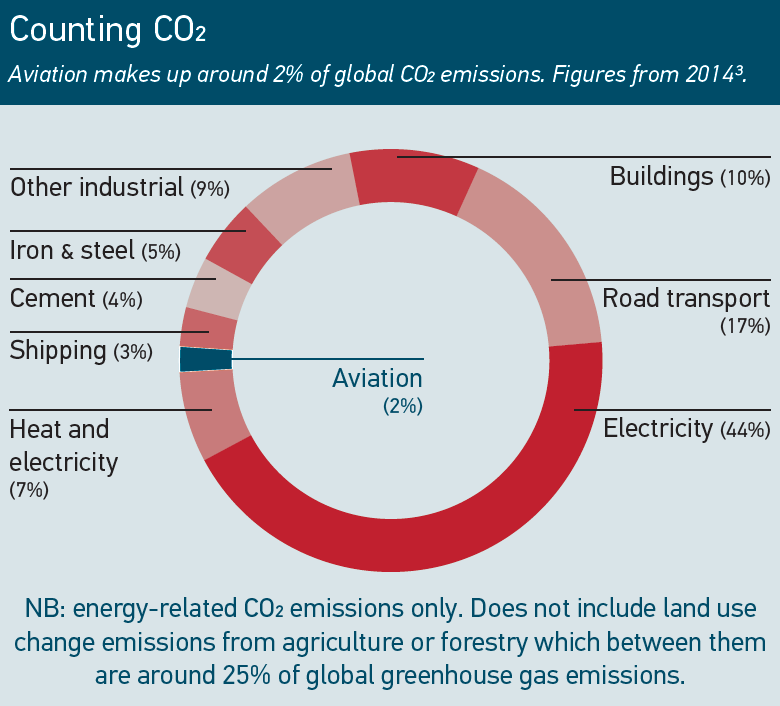Air transport generated 895 million tonnes of carbon dioxide (CO2) in 2018. This may sound like a lot, but it is only around 2% of the 42 billion tonnes of CO2 generated by human activities every year. Despite passenger numbers increasing at an average of 5% each year, aviation has managed to limit its emissions growth to around half of that. This is through massive investment in new technology and coordinated action to implement new operating procedures and infrastructural measures.
As aviation grows to meet increasing demand - particularly in fast-growing emerging markets - and as other sectors of the economy reduce emissions, aviation’s share of overall emissions is likely to increase.
A growing carbon footprint is unacceptable for any industry, which is why aviation, from manufacturers to airports to airlines to air traffic management, is working hard to limit greenhouse gas emissions.
Aviation's carbon footprint
If we consider energy-related CO2 emissions – without emissions from agriculture or forestry which account for around a quarter of global greenhouse gases – the largest contributor to CO2 emissions is electricity (44%). Second is road transport at 17%, followed by buildings at 10%.
Aviation, producing 2% of all human-induced CO2, emits less than the iron and steel industry (5%), cement production (4%) and the shipping sector (3%) and around the same as the servers and transmission cables of the internet.








